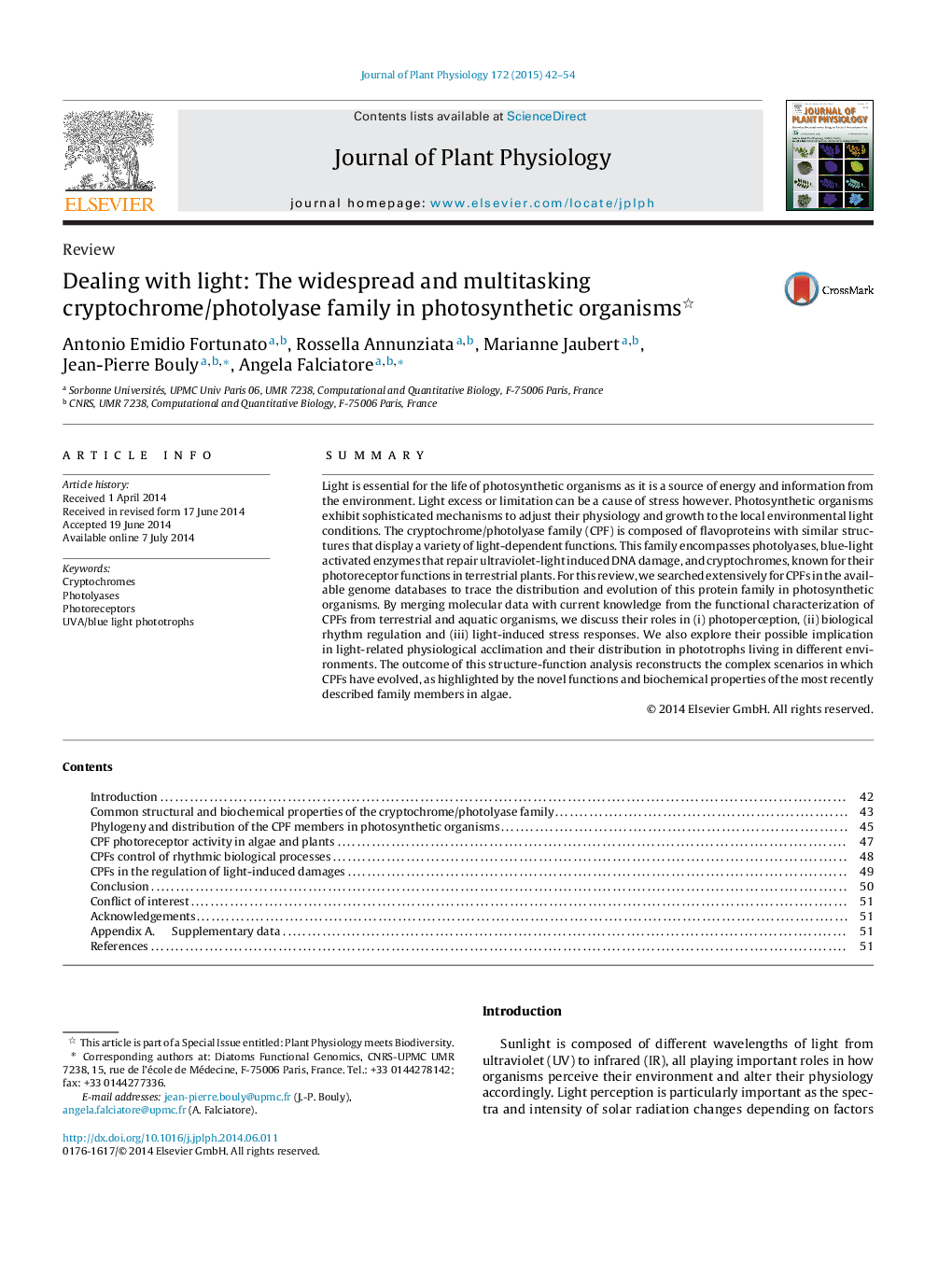| Article ID | Journal | Published Year | Pages | File Type |
|---|---|---|---|---|
| 8387676 | Journal of Plant Physiology | 2015 | 13 Pages |
Abstract
Light is essential for the life of photosynthetic organisms as it is a source of energy and information from the environment. Light excess or limitation can be a cause of stress however. Photosynthetic organisms exhibit sophisticated mechanisms to adjust their physiology and growth to the local environmental light conditions. The cryptochrome/photolyase family (CPF) is composed of flavoproteins with similar structures that display a variety of light-dependent functions. This family encompasses photolyases, blue-light activated enzymes that repair ultraviolet-light induced DNA damage, and cryptochromes, known for their photoreceptor functions in terrestrial plants. For this review, we searched extensively for CPFs in the available genome databases to trace the distribution and evolution of this protein family in photosynthetic organisms. By merging molecular data with current knowledge from the functional characterization of CPFs from terrestrial and aquatic organisms, we discuss their roles in (i) photoperception, (ii) biological rhythm regulation and (iii) light-induced stress responses. We also explore their possible implication in light-related physiological acclimation and their distribution in phototrophs living in different environments. The outcome of this structure-function analysis reconstructs the complex scenarios in which CPFs have evolved, as highlighted by the novel functions and biochemical properties of the most recently described family members in algae.
Keywords
Related Topics
Life Sciences
Agricultural and Biological Sciences
Agronomy and Crop Science
Authors
Antonio Emidio Fortunato, Rossella Annunziata, Marianne Jaubert, Jean-Pierre Bouly, Angela Falciatore,
